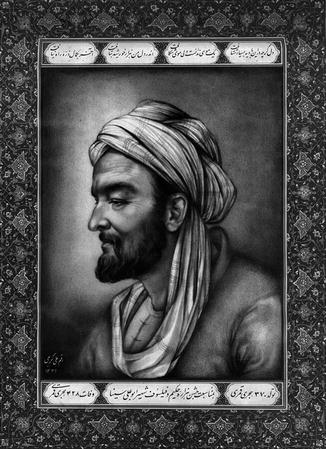Fig. 1.1
Hippocrates of Kos (460 BC–370 BC)
He is referred to as the father of modern medicine in recognition of his lasting contributions to the field as the founder of the Hippocratic School of Medicine. This intellectual school revolutionized medicine in ancient Greece, establishing it as a discipline distinct from other fields that it had traditionally been associated with (theurgy- θεουργία and philosophy- φιλοσοφία), thus establishing medicine as a profession (Castiglioni 1936; Syrmos 2007, 2009, 2011; Syrmos et al. 2010).
According to Galen, Hippocrates used the term “liver filled with water” for hydatid disease in a man (Pissiotis et al. 1972). In this earliest mention of hydatidosis, he suggested that “it breaks in the epiploon, when liver is distended with water; therefore the abdomen is full of water and the sick dies” (Pissiotis et al. 1972; Prousalidis 2007; Abdennebi 2009; Syrmos et al. 2010).
Hippocrates knew that rupture of the cyst meant the death of the patient, the disease represents the tumoral-vesicular growth of the E. granulosus larva into space occupying cysts, filled with an extremely allergenic fluid and the primordia of the worm, protoscoleces (Prousalidis 2007; Arseni et al. 1981; Lazar 2010; Syrmos et al. 2010).
Aretaeus of Cappadocia (Aρεταΐος) was also one of the most celebrated of the ancient Greek physicians (Haas 1991; Weber 1996; Syrmos et al. 2010). In the first century (AD), he wrote in Ionic Greek a general treatise on diseases such as hydatidosis, which is extant, and is certainly one of the most valuable relics of antiquity. Aretaeus had knowledge of hydatidosis and his consequences (Castiglioni 1936; Kudlien 1970; Weber 1996; Prousalidis 2007; Syrmos 2007, 2009, 2011; Syrmos et al. 2010).
Jewish Period
Hydatidosis was described in the Talmud (תַּלְמוּד) (Fig. 1.2), a central text of mainstream Judaism (Castiglioni 1936; Fielding 1966; Saidi 1976).
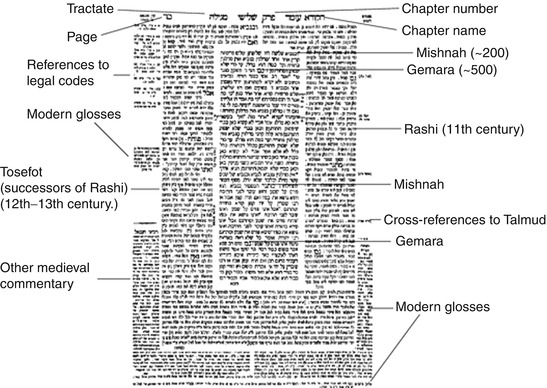

Fig. 1.2
Talmud
Talmud takes the form of a record of rabbinic discussions pertaining to Jewish medicine, ethics, law and culture. It has two components: the Mishnah (Hebrew: משנה), the first written compendium of Judaism’s Oral Law, and the Gemara, an elucidation of the Mishnah and related Tannaitic writings that often ventures onto other subjects and expounds broadly on the Hebrew Bible (Castiglioni 1936; Fielding 1966; Saidi 1976).
Roman Period
Galen of Pergamon (Aelius Galenus or Claudius Galenus, Γαληνός, Galēnos) (Fig. 1.3) was an important Roman physician (of Greek ethnicity). In the second century (AD), Galen contributed greatly to the understanding of numerous scientific disciplines, including anatomy, physiology, pathology, pharmacology and neurology. He also describes hydatidosis in his works and he reported about Hippocrates and Aretaeus knowledge of the disease (Castiglioni 1936; Syrmos 2007, 2009, 2011; Syrmos et al. 2010).
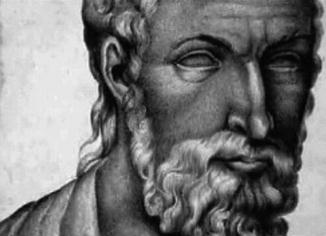

Fig. 1.3
Galen of Pergamon (129–199)
According to Galen, Hippocrates used the term “liver filled with water” for hydatid disease in a man (Pissiotis et al. 1972).
Arabic Period
In the Arabic Period, the descriptions of infections such as hydatidosis became more accurate with the works of Jurjani, Rhazes and Avicenna (Ruffer 1921a, b; Bryan 1930; Castiglioni 1936; Sullivan 1995; Cox 2003; Proussalidis 2007; Syrmos et al. 2010).
Jurjani
Abu Sahl ‘Isa ibn Yahya al-Masihi al-Jurjani (الجرجاني المسيحي يحيى بن عيسى ابوسهل) was a Persian Christian physician, from Gorgan, east of the Caspian Sea, in Iran. He was the teacher of Avicenna. He wrote an encyclopaedic treatise on medicine of one hundred chapters (al–mā‘a fi–l–sanā‘a al-tabi ‘iyyah; الطبيعية الصناعة في الماء), which is one of the earliest Arabic works of its kind and may have been in some respects the model for Avicenna’s Qanun. In his work, he reported on human involvement by hydatidosis (Castiglioni 1936; Fielding 1966; Goichon et al. 1999).
Rhazes
Rhazes (الرازي بن زكريامحمد Mohammad bin Zakariā– al Rāzi) (860–932AD) was a Persian polymath, a prominent figure in Islamic Golden Age. Edward Granville Browne considers him as “probably the greatest and most original of all the physicians and one of the most prolific as an author”. He described hydatosis and its consequences (Castiglioni 1936; Fielding 1966; Goichon et al. 1999; Syrmos et al. 2010).
Avicenna
Avicenna (Ibn Sīnā, ابن سينا) (980–1037) (Fig. 1.4) was the most prominent philosopher in the Islamic tradition who wrote many works concentrated on medicine. He is regarded as the most famous and influential polymath of the Islamic Golden Age. Into his works (The Book of Healing and The Canon of Medicine), he made an attempt to describe hydatidosis. Ibn Sīnā’s Canon of Medicine provides a complete system of medicine according to the principles of Galen and Hippocrates (Castiglioni 1936; Fielding 1966; Goichon et al. 1999; Cox 2003; Abdennebi 2009; Syrmos et al. 2010).
The Seventeenth Century
By the seventeenth century, authors once more pointed out pathological similarities between the watery sacs in humans and those in domesticated animals, especially sheep and cattle (Patterson 1993).
The contribution of the animal factor of the hydatid disease was not suspected until the research in the seventeenth century by Redi, Tyson and Morgani (Castiglioni 1936; Fielding 1966; Goichon et al. 1999).
Redi
The first step towards figuring out the cause of echinococcosis occurred during the seventeenth century thanks to the studies of Francesco Redi (Fig. 1.5) (Castiglioni 1936; Fielding 1966; Goichon et al. 1999).
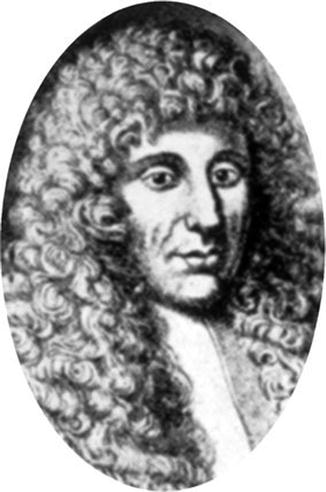

Fig. 1.5
Francesco Redi (1626–1697)
Francesco Redi (1626–1697) was an Italian physician, naturalist and poet. He is best known for his series of experiments, published in 1668 as Esperienze Intorno alla Generazione degl’Insetti (Experiments on the Generation of Insects), which is regarded as one of the first steps in refuting “spontaneous generation”—a theory also known as Aristotelian abiogenesis. As a physician, he became court physician to Ferdinando II de’ Medici, Grand Duke of Tuscany, and, his successor, Cosimo III (Castiglioni 1936; Fielding 1966; Goichon et al. 1999).
He made a number of observations and experiments in rabbits regarding the presence of parasitic worms in cysts. With his studies, Redi demonstrated the animal origin of the disease, and his results were later confirmed by Edward Tyson and Philip Hartmann Redi (Castiglioni 1936; Fielding 1966; Goichon et al. 1999).
Tyson
Edward Tyson was a British scientist and physician, commonly regarded as the founder of modern comparative anatomy, which compares the anatomy between species. Edward Tyson and Philip Hartmann in Germany promoted the idea that hydatid cysts contained embryonic forms of insects or worms. Some of Tyson’s dissections were carried out on “rotten sheep” (Castiglioni 1936; Risse 2005).
In 1680, he established that porpoises are mammals. In 1698, he dissected a chimpanzee and the result was the book, Orang-Outang, sive Homo Sylvestris: or, the Anatomy of a Pygmie Compared with that of a Monkey, an Ape, and a Man. In this book, he came to the conclusion that the chimpanzee has more in common with man than with monkeys, particularly with respect to the brain. This work was republished in 1894, with an introduction by Bertram C. A. Windle that includes a short biography of Tyson (Castiglioni 1936; Fielding 1966; Goichon et al. 1999).
Edward Tyson in 1687 suggested the parasitic nature of hydatid disease (Kattan 1997).
Morgagni
Giovanni Battista Morgagni (1682–1771) was an Italian anatomist, celebrated as the father of modern anatomical pathology. He reported a postmortem patient with a large hydatid cyst in the retroperitoneal tissue near the left kidney, containing many daughter cysts (Castiglioni 1936; Androutsos 2006). The spinal canal had been invaded through the intervertebral foramina, which was dilated (Castiglioni 1936; Androutsos 2006).
The Eighteenth Century
In the eighteenth century, the larva of Echinococcus and the similarity of the hydatid cysts in humans and other animals were described (Castiglioni 1936).
Bidloo
Govert Bidloo (1649–1713) was a Dutch Golden Age physician, anatomist, poet and playwright. He was the personal physician of William III of Orange-Nassau, Dutch stadholder and king of England (Castiglioni 1936). In 1708, Bidloo was the first to report osseous hydatidosis in a case involving the humerus (Işlekel et al. 1998a, b; Schnepper and Johnson 2004).
Peter Simon Pallas
Peter Simon Pallas was a famous German and Russian naturalist, scientist and traveller who became chief of Mineral cabinet (Fig. 1.6) (Castiglioni 1936; Fielding 1966; Goichon et al. 1999).
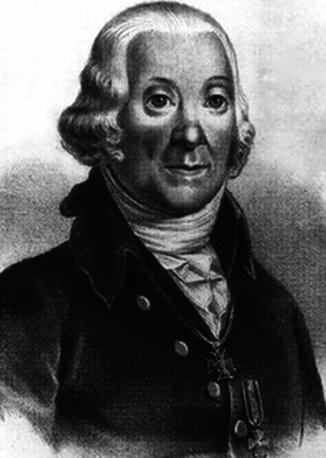

Fig. 1.6
Peter Simon Pallas (1741–1811)
John Hunter
John Hunter (1728–1793) was a Scottish surgeon regarded as one of the surgeons advocating of careful observation and scientific method in medicine. In 1773, he described the morphological picture the hydatid cyst (Abdennebi 2009).
Stay updated, free articles. Join our Telegram channel

Full access? Get Clinical Tree


